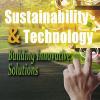Business Transformation Requires Transformational Leaders
Leadership and teaming skills are front and center in times of rapid change. Meet today’s constant disruption head on with expert guidance in leadership, business strategy, transformation, and innovation. Whether the disruption du jour is a digitally-driven upending of traditional business models, the pandemic-driven end to business as usual, or the change-driven challenge of staffing that meets your transformation plans — you’ll be prepared with cutting edge techniques and expert knowledge that enable strategic leadership.
Subscribe to Arthur D. Little's Culture & Leadership Newsletter
Insight
Rohit Nishant and Thompson S.H. Teo explore the environmental impact of AI and ML. Specifically, the applications where these technologies add the most value are those that require heterogenous data in complex settings (e.g., optimizing smart cities, modeling climate change). In the process of creating value, these large AI and ML models require energy-intensive computing, leaving a huge carbon footprint. To counteract these concerns, Nishant and Teo offer the “Align, Reduce, Measure” (ARM) framework for mitigating the environmental impact of AI and ML algorithms. The framework encompasses the organizational structure, addresses data heterogeneity, and measures results to create accountability.
Jacek Chmiel draws attention to the increasing energy consumption by the electronic devices integrated into our daily lives. In addition to the ubiquitous mobile devices we all carry around, there are billions of devices, not to mention back-end servers, all of which consume energy. Exacerbating this problem are ML and distributed ledger technologies, such as blockchain, that require intensive computing cycles, and use even more energy. The good news is that a greener software development strategy can have significant impact on energy usage of electronic devices. Chmiel explains the challenges to implementing this strategy and how organizations can overcome them.
Cutter Consortium Senior Consultant Curt Hall presents intriguing examples of how corporations and governments use AI and compatible technologies to move us toward a more sustainable world. He explains how many companies are using AI to reduce the energy consumption of … AI(!) and other digital technologies. He illustrates innovative technology-based solutions being developed for tracking carbon emissions and presents a selection of companies targeting key infrastructure areas for carbon reduction initiatives (e.g., data centers, transportation, waste management).
A challenge we face today is how to leverage technology to move us toward a more sustainable future, while mitigating its own impact. This issue of Cutter Business Technology Journal explores the dual sides of the technology sword — the potential for environmental benefit and harm — and, in true karmic spirit, how technology can help itself be more sustainable.
Cutter Consortium conducted an interview with Dejan Jakovljevic, CIO and Director of the United Nations (UN) Food and Agriculture Organization (FAO), on how FAO uses technology to reduce world hunger. Jakovljevic tells us how FAO has embraced digital technologies to not only improve its own internal processes but also to develop tools for its members. He explains how FAO transformed from a traditional sequential project management process to a nimble, risk-taking process better suited to addressing the needs of our rapidly changing world.
Executive Update
Looking to CPaaS for Cohesive Market Structure
In this Executive Update, we explore how communications-platform-as-a-service (CPaaS) allows businesses to develop and manage communications features without needing to develop and maintain the infrastructure on the back end of the service. CPaaS makes it easier than ever for companies to create differentiating customer communications experiences while promising to reduce costs and speed up innovation.
Advisor
DEI Leadership in Action
The Technology in Business Schools Roundtable (TBSr) is a global organization composed of technology leaders who are responsible for managing IT in business schools across the US and Canada. This Advisor outlines several clear examples of how the TBSr board of directors effectively applied four DEI leadership actions to initiate their own journey.
Resistance to change is the primary reason why so many good ideas fail. Thus, it is critical to have user involvement throughout the scope definition and process redesign. Discover how an effective communication strategy between top management and users makes all the difference during project initiatives.






















